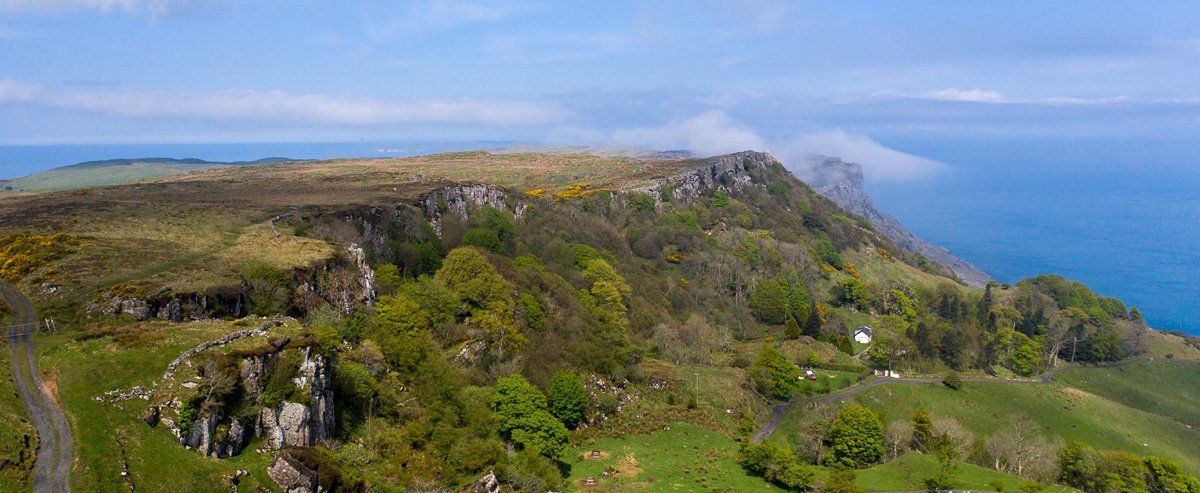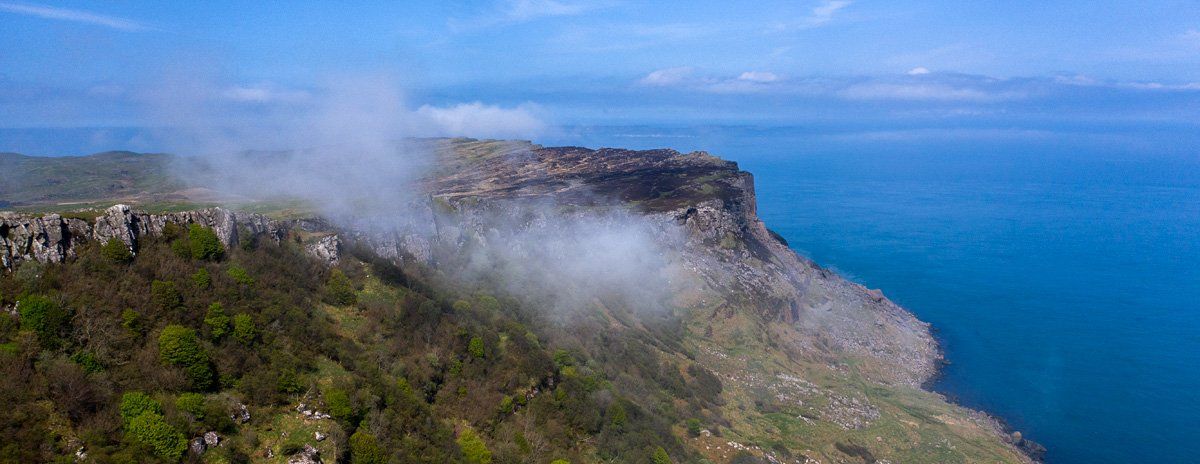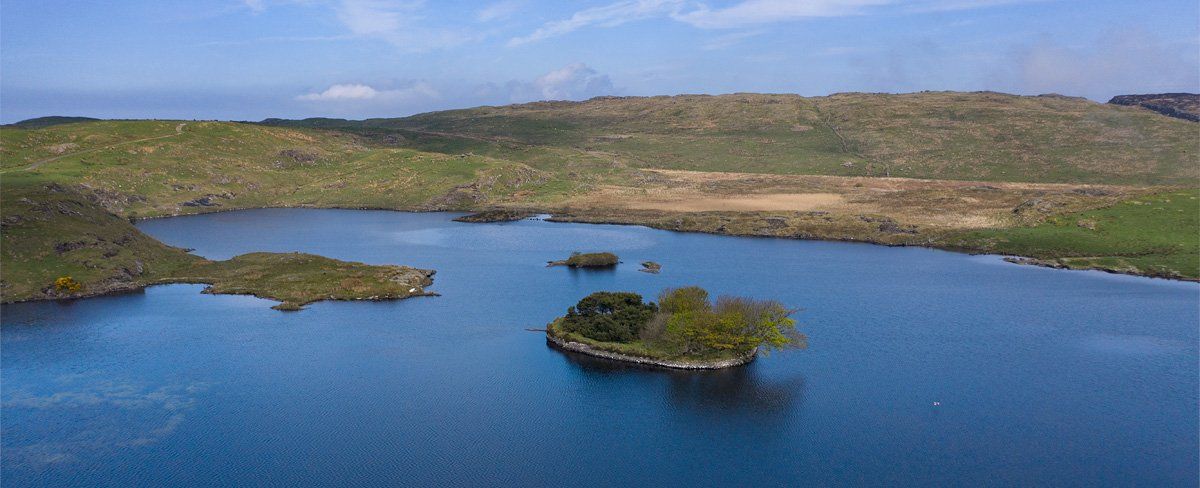This majestic headland with vertical dolerite columns rising to 600 feet above sea level has spectacular views across the North Channel to Raghery, Scotland and Murlough Bay. The waters below are some of the most treacherous in the northern isles, creating whirlpools and strong currents. Twice a day the Irish Sea ebbs and flows sending billions of gallons of water between here and Scotland. One tidal race known as 'Sloughnamorro' runs between Fair Head and Raghery. Full of swirls, standing waves and fast-moving currents, on a still day it can be heard from Rue Point, sounding like a powerful fast-flowing river.
One victim of the tidal race was the coaster 'Glentow' which lies at the foot of Fair Head, owned by the local Ballycastle company McGildowney Shipping Company and carrying coal. She came in too close on a flood tide and was forced aground, where she later broke up. Another wreck lying close by is the American owned 5,300 ton S.S. Santa Maria which was en route from Virginia to England with fuel oil when she was torpedoed just off Fair Head by UB-19 on February, 1918. This whole area saw continuous U Boat activity during both wars and the area is well known for its 'wreck' diving.
Fair Head is also recognized in climbing circles as being one of the best Crag climbs in the British Isles, most of the routes are long and follow the vertical cracks, the best climbs are multi-pitch VS ++ and a good rack is needed, no crowds and a spectacular location. The Grey Man's Path runs from the shore to the plateau above Fair Head, though many refer to it starting at Marconi's Cottage and going on past Lough Dhu. There are several stories about the Grey Man's Path and one tells of Mary McNulty who lived beyond Lough Dhu, she used the Grey Man's Path to go down to the shore to collect dulse at the base of Fair Head.
One evening, she was returning home as usual with a full bag of dulse; along the way she would stop to catch her breath at favourite spots, one of these was at the top of the gulley. As she rested there this evening she noticed in the twilight a figure of a man approaching her with a limp, she paid no heed to him and started out on her way towards Lough Dhu where she would take another rest. The figure caught up and walked beside her, in politeness Mary exchanged a few words with him about the weather, though she noticed his voice was hardly legible and not an accent she was familiar with, she noticed too, in the falling light, that his face was pale and expressionless in the shadow of his hood, looking almost grey.
She paid no more heed to this only to wondered who he was and from where he had come and what ailed him. As they reached Lough Dhu Mary sat down on her favourite rock and the stranger sat down beside her. It was then that she noticed his hair was a translucent green colour and she could not resist but ask him why, he told her it was due to living beneath the waters of Lough Dhu for many years. This alarmed Mary for she thought he was either intoxicated or deranged, and she cared little for either one. The stranger said he was very tired and proceeded to rest his head on Mary's dulse bag and his head half ways on her lap and fell asleep.
For a moment she did not know what to do, bewildered she looked for help, it was then that she noticed one of the strangers feet was cloven, now this put fear into her and she squeezed her leg low enough to slip it out from below the strangers head and took off, her quiet steps turning into the thumps of a fearful run as her heart pounded and her mind waited for the strange creature to grab her from behind. As she got a fair distance away and within sight of her home she heard a spine chilling neighing coming from Lough Dhu, then it fell silent. Mary never came back along the Grey Man's Path at twilight again and every time she passed Lough Dhu in the daylight it sent a shiver of fear through her body.
The story goes that she had encountered the devil-horseman that lives in Lough Dhu and wanders along the Grey Man's Path at twilight disguised as a human, waiting to lure some unsuspecting human into the underworld of Lough Dhu. So, you've been warned, especially if you have taken too long to walk around from Murlough Bay and twilight falls upon you!
Another lough close to Lough Dhu is Lough na Cranagh which has a crannog in the centre. This one is credited to being built in mid 1500s by one of the MacDonnell clan, though it could have been constructed on the site of an older crannog. These features were built on natural or man-made islands in lakes or on boglands, they were created as defensive homesteads, some were still being built in Ireland up to the seventeenth century., it is estimated that there are nearly 1500 examples throughout Ireland.







